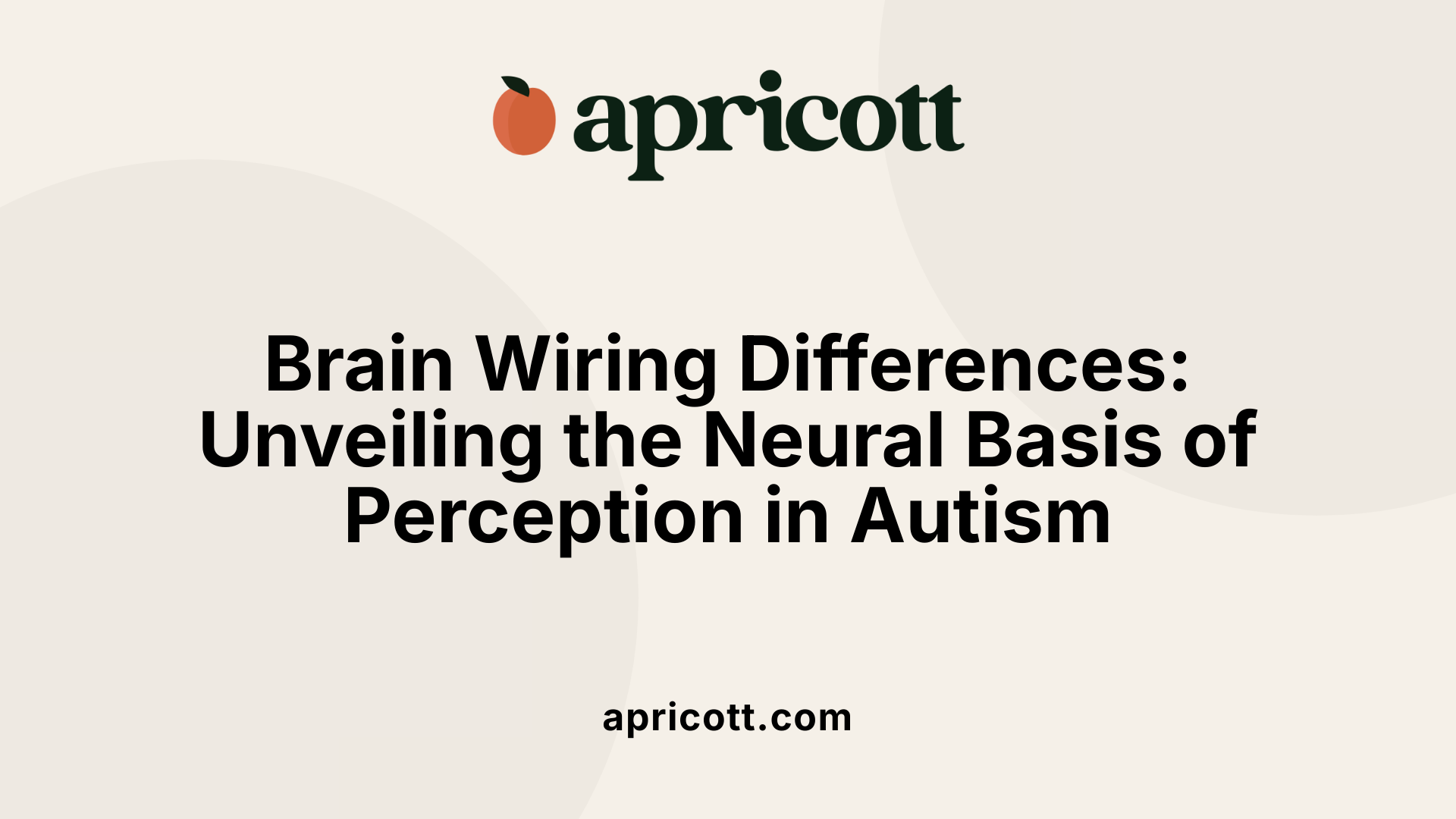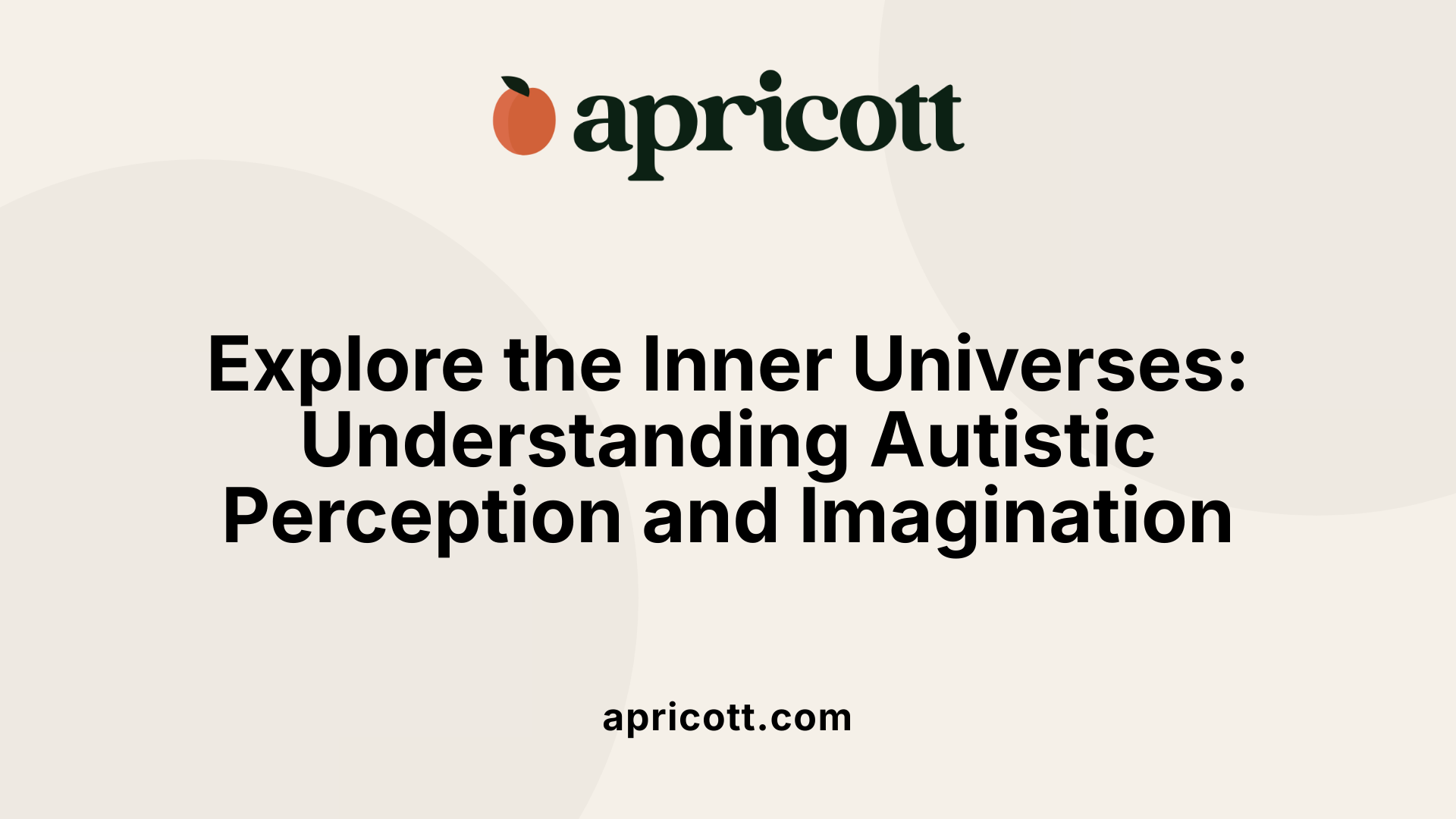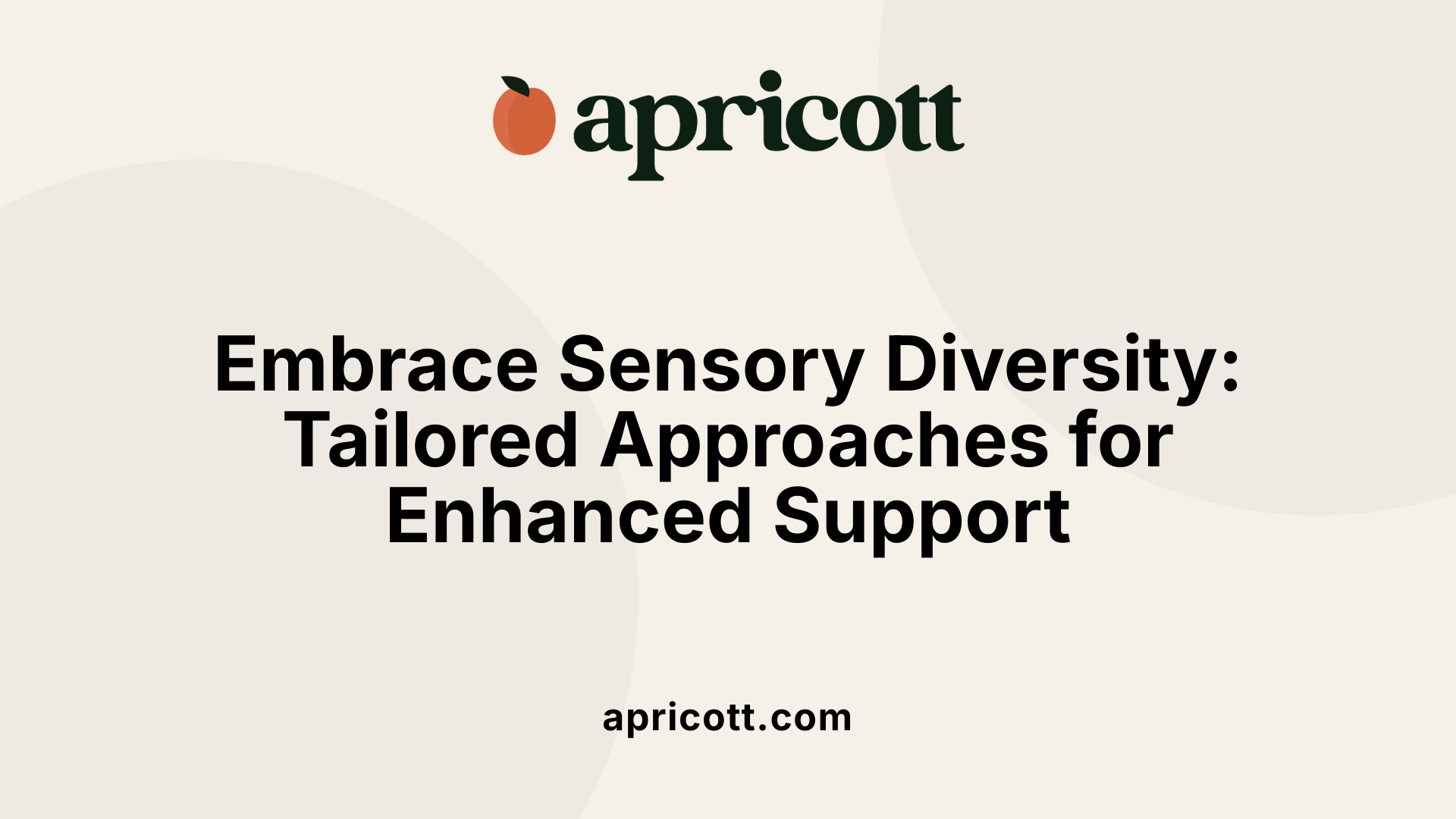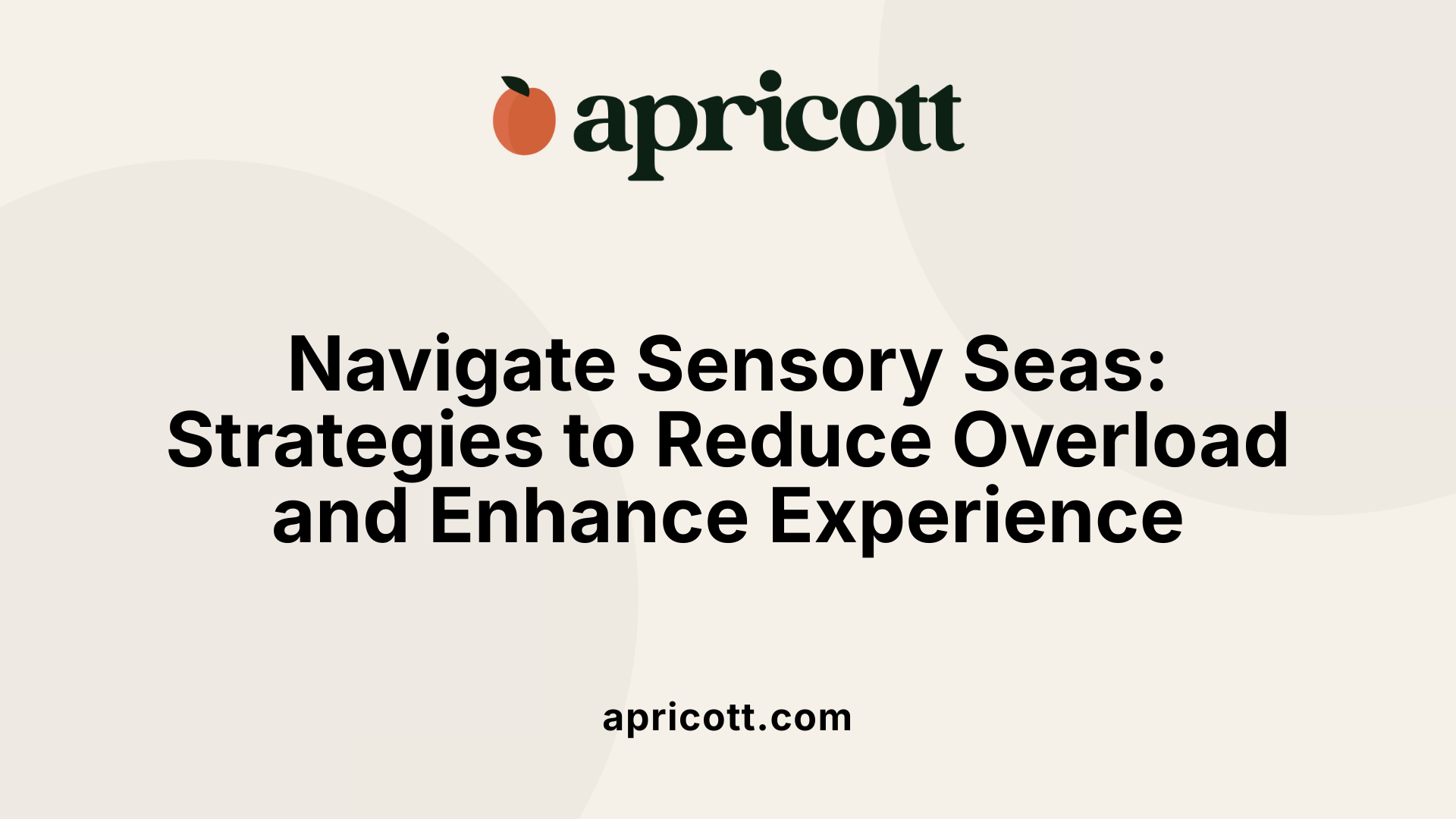July 23, 2025
Exploring the Unique Visual and Sensory Perspectives of Autism
Autism is a complex neurological condition that influences how individuals perceive and interpret their environment. From heightened sensitivities to distinctive perceptual worlds, autistic people often experience their surroundings in ways that are markedly different from neurotypical perceptions. This article delves into how autism shapes sensory experiences, visual processing, internal worlds, and neural mechanisms, providing a comprehensive understanding of the perceptual landscape of autistic individuals.

Autism impacts sensory perception by altering how the brain processes signals from the environment. Studies, such as those by the Geneva Centre for Autism, show that up to 80% of autistic individuals experience distorted perceptions. These distortions can include difficulties with depth perception, size, shape, and motion, often leading to a fragmented visual experience where only small details are perceived rather than the full picture.
The neural pathways involved in sensory processing, including specific regions of the brain such as the visual cortex, are often atypical in autistic individuals. This results in heightened sensitivities to stimuli like noise, light, touch, and taste—often causing sensory overload, which can trigger distress or meltdowns. Many autistic people also report difficulties with facial recognition and interpreting facial expressions, known as prosopagnosia or face blindness. This affects social interactions and emotional understanding, making daily communication more challenging.
Atypical neural responses, such as delayed cortical activation and abnormal sensory integration, further influence how stimuli are perceived and prioritized. For example, a sensory input that might be neutral for a neurotypical person can be overwhelming or even painful for someone with autism. These sensory differences are not only limited to hyper-reactivity but can also include hyposensitivity, where individuals seek intense stimulation to reach a sensory equilibrium.
In addition to basic sensory perception, many individuals on the spectrum experience sensory phenomena like synaesthesia, where sounds may be seen as colors or tastes as shapes, adding another layer of complexity to perception. The combination of these neural and sensory processing differences ultimately shapes a unique perceptual world—one that can be rich and detailed but also prone to overload and misinterpretation.
Neuroscience research highlights that the brains of autistic individuals are wired differently, with atypical connectivity between regions involved in sensory, social, and cognitive functions. Early visual processing abnormalities are common, particularly within the dorsal stream, which helps interpret motion and spatial relationships. This can cause challenges in perceiving movement accurately and registering visual information properly.
Social perception, including face recognition, also involves distinct neural mechanisms. Reduced activity in the fusiform face area (FFA), responsible for recognizing faces, and the amygdala, linked to emotional responses, impairs the ability to interpret social cues and facial expressions.
The balance between neural excitation and inhibition—a crucial aspect of normal brain function—is often disrupted in autism. Increased excitation or decreased inhibition can lead to hyperactivity in certain neural areas, like the visual cortex, which contributes to perceptual distortions and sensory hypersensitivity. This overactivity can result in visual overload and difficulty filtering relevant from irrelevant stimuli.
Furthermore, differences in how the brain scales perceptual input and processes complex sensory information alter how individuals interpret their environment. Variations in receptive field sizes and the inability to effectively suppress irrelevant stimuli contribute to a heightened perception of details but also to sensory overload.
Overall, these neural differences provide a foundation for many of the perceptual idiosyncrasies seen in autism. They help elucidate how some individuals process sensory information so intensely or differently that everyday experiences become overwhelming, yet also offer insights into their enhanced abilities in areas like detail recognition and pattern detection.
| Neural Elements | Impact on Perception | Related Brain Regions |
|---|---|---|
| Atypical connectivity | Alters sensory integration | Whole brain, especially sensory and social regions |
| Visual cortex hyperactivity | Causes visual distortions and overload | Occipital lobe, dorsal stream |
| Reduced fusiform face area activity | Difficulties with face recognition | Temporal lobe, fusiform gyrus |
| Impaired excitatory/inhibitory balance | Sensory hypersensitivity and distortions | Neural circuits involving GABA and glutamate |
| Atypical receptive fields | Differences in detail processing | Visual and sensory cortices |
Understanding these neurobiological underpinnings helps explain the diverse sensory experiences among autistic individuals. Acknowledging these differences fosters better support strategies and accommodations, allowing individuals to navigate their perceptual world more comfortably.

Research indicates that individuals on the autism spectrum perceive visual illusions differently than neurotypical people. Many show reduced susceptibility to illusions like the Müller-Lyer or the Ponzo illusion, which suggests unique processing pathways in their visual system.
Neuroimaging studies have shown atypical activity in the early visual cortices—the brain regions responsible for initial visual processing. This may result in enhanced detection abilities for certain stimuli, such as high-contrast moving objects, due to an imbalance between excitatory and inhibitory signals in visual circuits.
Furthermore, disruptions in social brain areas, particularly the superior temporal sulcus, influence how faces and social cues are perceived. These differences mean autistic individuals often interpret complex visual stimuli through a different neural lens, focusing more on details rather than the holistic scene.
In addition to local processing over global, there is evidence that abnormalities in peripheral vision and visual-spatial processing contribute to distinctive perception challenges. These include difficulties in integrating visual information into a cohesive image, which can influence social understanding and environmental navigation.
Overall, the combined effects of heightened local processing, altered neural connectivity, and atypical attentional mechanisms create a unique perceptual experience. Such differences reflect the complex interplay of neural pathways that shape how visual information is gathered, processed, and understood by autistic individuals.

Individuals on the autism spectrum often experience their internal worlds as overwhelmingly detailed, vivid, and complex. Their perceptual environment is described by many autistic people as a dense web of impressions, cues, and information—an intricate sensory landscape that can be both fascinating and overwhelming.
This heightened or altered perception results from differences in how the brain processes sensory input. For example, autistic individuals tend to have exceptional visual perceptual abilities, noticing minute details that most neurotypical people might overlook. Many also report experiencing perceptual distortions, such as difficulties with depth perception, shape, size, and motion, or seeing only fragments rather than the entire scene. Some descriptions include seeing only parts of faces or objects, which can make social recognition and scene comprehension challenging.
Internal worlds in autism aren't solely visual—they encompass a rich tapestry of thoughts, imagery, and imagination. For many, these inner worlds serve essential functions like emotional regulation, mental rehearsal for social situations, and creative expression. Autistic individuals often build elaborate inner universes inspired by fiction, personal interests, or hypothetical scenarios, which provide comfort, safety, and a means for self-understanding.
Neural differences underpin these perceptual experiences. Variations in brain structures such as the superior temporal sulcus and other regions involved in social perception contribute to the difficulties in recognizing facial cues and interpreting social signals. Brain activity tends to be atypical in these regions, affecting how social cues are processed, which explains why many autistic individuals find social interactions exhausting or confusing.
These differences in perception influence cognitive functions as well. For instance, autistic minds often excel in pattern recognition, attention to detail, and logical reasoning, traits that can be advantageous in fields like mathematics, science, and arts. However, they may also struggle with abstract thinking or understanding metaphorical language, requiring concrete explanations and explicit instructions.
The internal worlds are further shaped by sensory sensitivities. Many autistic individuals are hypersensitive or hyposensitive to stimuli such as sound, light, touch, taste, and smell. These sensitivities can lead to sensory overload, causing distress, anxiety, or meltdowns. To manage this, many use sensory aids like noise-canceling headphones, sunglasses, or sensory-friendly environments.
Autistic people’s perception of their environment is often described as navigating through a vast, intricate web of sensory impressions and thoughts. This can cause sensory overload but also presents unique strengths, such as heightened observation and detailed mental imagery.
Inner worlds serve crucial functions for emotional stability. They offer a safe space for processing feelings, practicing social scenarios, or exploring personal interests without external pressures. For example, some create imaginary scenarios to rehearse social interactions or understand their emotional states.
These vivid inner universes also allow individuals to find comfort and coherence in their experiences. For many autistic persons, engaging with their inner worlds is both a refuge and a tool for managing sensory and emotional challenges.
Engaging with complex mental images or narratives fosters emotional regulation and aids in self-awareness. It helps in building resilience against sensory overload, providing a mental escape or a means to calm oneself during stressful moments.
The nature of internal perceptual worlds shapes how autistic individuals perceive and interpret their environment. For instance, the ability to focus intensely on specific details influences their problem-solving skills and interests, leading to exceptional abilities in certain areas.
However, this detailed perception can also lead to challenges. Overload from excessive sensory detail may cause difficulty concentrating or processing information efficiently, especially in visually or auditorily cluttered settings.
Research indicates that differences in brain development, including activity in regions associated with social understanding and sensory processing, contribute to these perceptual and cognitive variations. These neural patterns result in distinct ways of seeing and understanding the world.
In some cases, perceptual differences extend into the realm of synaesthesia, where individuals involuntarily associate sounds with colors or tastes with shapes. These multi-sensory experiences further diversify the internal landscape, offering both unique perspectives and additional sensory challenges.
Overall, the internal worlds of autistic individuals are multifaceted—richly textured, highly detailed, and deeply personal. Understanding these worlds helps explain their perceptions, emotional responses, and cognitive strengths and difficulties, emphasizing the importance of supportive strategies that acknowledge their unique sensory and perceptual experiences.
| Aspect | Description | Implication |
|---|---|---|
| Visual perception | Heightened detection of details, perceptual distortions, fragmentary views | Both strengths in detail recognition and challenges in holistic scene understanding |
| Social perception | Difficulties with facial recognition, interpreting cues, body language | Impact on social interactions and communication |
| Sensory sensitivities | Over- or under-sensitivity to stimuli | Sensory overload and need for sensory aids |
| Inner worlds | Vivid imaginations, elaborate scenarios, safe mental universes | Essential for emotional regulation and self-exploration |
| Brain structures | Variations in regions like the superior temporal sulcus | Basis for perceptual and social differences |
| Synaesthesia | Cross-modal sensory experiences | Adds richness and complexity to perception |
In conclusion, understanding the internal perceptual worlds of autistic individuals reveals a landscape textured with strengths, challenges, and insights—calling for environments and supports that respect and accommodate their unique perceptions.
Research into the neuroscience of autism reveals that differences in brain structure and connectivity play a crucial role in how individuals with autism perceive their environment. These differences influence sensory processing, social perception, and cognitive functions.
One primary aspect is atypical connectivity within the brain. The autistic brain often exhibits unusual patterns of neural wiring, especially between regions involved in sensory processing and social cognition. This leads to a heightened sensory awareness but also a greater likelihood of sensory overload. For example, early visual processing pathways, particularly those in the dorsal stream—responsible for motion and spatial awareness—show abnormalities. The MT+ area, which is sensitive to motion, may process visual cues differently, affecting how motion and movement are perceived.
In addition to sensory regions, social brain areas such as the fusiform face area (FFA) and the amygdala display reduced activity in many autistic individuals. This diminished activation makes recognizing faces and interpreting emotional expressions more difficult. Consequently, social cues become harder to decode, which impacts social interaction and communication skills.
Neuroscientific studies also highlight the role of neural excitation and inhibition balance. An increased excitation state relative to inhibition can cause sensory signals to be amplified or distorted, contributing to perceptual differences. Variations in receptive field sizes—the area of the sensory surface that a neuron responds to—are also observed, influencing how sensory input is integrated.
Furthermore, violations of perceptual scaling laws, which govern how sensory information is processed in a normalized way, suggest that perception in autism involves fundamentally different calibration mechanisms. These neural characteristics underpin the vivid, sometimes fragmented, perceptual experiences reported by autistic individuals.
Overall, these neural insights illustrate that differences in the architecture and functioning of brain regions critically shape how those with autism perceive and process the world. This understanding provides a foundation for developing targeted interventions and support strategies that accommodate these perceptual variations.
| Neural Aspect | Explanation | Impact on Perception |
|---|---|---|
| Atypical connectivity | Unusual wiring among sensory and social regions | Sensory overload, difficulty in social recognition |
| Visual processing abnormalities | Differences in dorsal stream and MT+ activity | Issues with motion detection, visual clarity |
| Reduced activity in FFA and amygdala | Impairment in face and emotion recognition | Social communication challenges |
| Excitation/Inhibition imbalance | Increased neural excitation | Sensory amplification, perceptual distortions |
| Receptive field variations | Changes in neurons’ response areas | Fragmented perception, detail focus |
| Violations of perceptual scaling | Disrupted sensory normalization | Overwhelming, chaotic sensory experiences |
Understanding these complex neural mechanisms highlights the intricacies of perceptual differences in autism, advancing both scientific knowledge and practical support.

Gaining insight into how individuals with autism perceive their environment offers invaluable benefits in tailoring support mechanisms and communication methods. By recognizing that many autistic people experience distorted perceptions—including difficulties with depth, size, shape, motion, and facial recognition—caregivers and clinicians can develop strategies that reduce sensory overload.
Understanding these perceptual differences makes it possible to create environments that are less overwhelming. For instance, minimizing bright lights, reducing visual clutter, and controlling noise levels can help prevent sensory overload, which often triggers meltdowns or withdrawal. Using sensory tools like colored overlays or lenses can further stabilize perceptual pathways, helping individuals organize visual input and feel more grounded.
Moreover, awareness of sensory sensitivities across different modalities informs the use of personalized aids such as noise-canceling headphones, sunglasses, or tactile stimuli that provide calming input. These adaptations mitigate stress and foster a sense of safety, encouraging engagement and communication.
On a social level, understanding difficulties with facial recognition and interpreting social cues—like body language and facial expressions—allows for tailored communication strategies. For example, explicitly teaching social cues or using visual supports can bridge perceptual gaps. These approaches help autistic people to better understand social interactions, reducing misunderstandings and fostering meaningful connections.
Integrating knowledge about atypical visual processing pathways and neural mechanisms associated with autism also prompts the development of targeted interventions. These may include therapies designed to enhance perceptual categorization, improve sensory integration, or strengthen feedback processing in the brain.
Overall, appreciation of these perceptual differences supports a more empathetic and effective approach. It helps in designing environments, tools, and interactions that respect individual sensory profiles, greatly improving quality of life and social inclusion for autistic individuals.

Research indicates that individuals on the autism spectrum perceive visual illusions differently from neurotypical people. Often, they are less susceptible to certain illusions, which reflects variations in how their visual pathways process information. Neuroimaging studies reveal that these differences involve atypical activity in early visual areas of the brain, alongside altered attentional and higher-level cognitive functions.
Autistic individuals tend to excel at detecting high-contrast moving objects, possibly due to an imbalance between excitatory and inhibitory signals in their visual circuits. Moreover, disruptions in social perception regions, such as the superior temporal sulcus, influence how they recognize faces and interpret social cues.
Additionally, differences in peripheral vision and visual-spatial processing can lead to unique ways of interpreting their surroundings, often resulting in perceptual challenges. These visual processing differences are a result of complex neural connectivity patterns that favor detailed local processing, which sometimes makes perceiving the whole scene at once difficult.
Overall, these perceptual distinctions highlight a distinctive way that autistic minds receive and interpret visual data, emphasizing a blend of heightened detail focus and altered neural circuitry that influences everyday visual experience.
Many people on the autism spectrum experience heightened sensory sensitivities, profoundly affecting their daily lives and behaviors. Environmental stimuli such as bright lights, loud sounds, and complex visual patterns can lead to sensory overload, causing discomfort, pain, or emotional distress.
For instance, sunlight might feel painfully overwhelming, and noisy environments can become almost deafening. These sensitivities often prompt individuals to seek relief through various aids or adjustments such as wearing sunglasses or noise-cancelling headphones. These tools help create a sensory sanctuary, reducing chaos and making environments more manageable.
Sensory overload can trigger avoidance behaviors, where individuals retreat from overwhelming scenarios or stim to self-regulate emotions. Stimming—repetitive movements or noises—is a common coping mechanism that helps manage sensory input and stay grounded.
Recognizing and accommodating sensory sensitivities are vital for fostering comfort and inclusion. Designing sensory-friendly spaces—like quiet rooms, adjustable lighting, or reduced noise levels—can directly mitigate overload, allowing individuals with autism to engage more comfortably in social and daily activities.
In summary, sensory sensitivities significantly influence behavior, prompting adaptive strategies that help manage overwhelming stimuli. Supporting these needs helps improve quality of life by reducing distress and promoting a sense of safety and control.
| Trigger Type | Typical Response | Support Strategies | Additional Notes |
|---|---|---|---|
| Bright Lights | Discomfort or pain | Use of sunglasses, dimmer lighting | Reduces visual overstimulation |
| Loud Noises | Anxiety, distress | Noise-cancelling headphones, quiet zones | Helps maintain auditory comfort |
| Complex Visual Patterns | Visual overload | Simplify visual environment, colored overlays | Enhances focus and clarity |
| Touch Sensitivity | Discomfort or pain from textures | Sensory-friendly clothing, deep pressure input | Supports tactile regulation |
| Strong Smells | Discomfort or nausea | Avoidance of overpowering scents | Manages olfactory sensitivities |
This broad understanding underscores the importance of tailored support systems, environmental modifications, and personal coping mechanisms that accommodate sensory sensitivities. These strategies not only reduce overstimulation but also empower autistic individuals to navigate their environments with greater ease and confidence.
Autistic individuals often exhibit unique sensory processing profiles, including hypersensitivity (over-responsiveness) or hyposensitivity (under-responsiveness), across all senses—sight, hearing, touch, taste, and smell. These sensory differences influence how stimuli are perceived, leading to behaviors such as sensory seeking or avoidance.
Enhanced visual perceptual skills are common, particularly in noticing minute details within their environment, which can be advantageous in tasks requiring precision or pattern recognition. Conversely, challenges in recognizing faces, interpreting social cues, and processing complex visual stimuli can generate anxiety and social difficulties.
Interestingly, many autistic individuals experience synaesthesia—a blending of senses—such as seeing colors when hearing sounds or experiencing tactile sensations triggered by visual stimuli. These experiences are involuntary, durable, and often enrich their perception of the world, although they may sometimes contribute to sensory overload.
Supporting sensory needs involves not only aids and environmental adaptations but also understanding the complex ways in which perception differs in autism. This holistic approach is essential for fostering resilience, emotional well-being, and social participation.
Gaining insight into how autistic individuals perceive the world differently is fundamental to creating effective support and communication methods. Autism is characterized by perceptual experiences that often involve visual distortions, sensory overload, and unique responses to stimuli, which can significantly impact daily functioning.
Research indicates that many autistic people see their environment as a 'dense web' of impressions, with heightened sensory awareness that can quickly become overwhelming. They may experience distortions such as difficulties with depth perception, size, shape, and motion, and often focus on small details rather than the whole scene. This fragmented perception can cause confusion and emotional distress, especially in complex environments.
By understanding these perceptual differences, caregivers and clinicians can tailor their approaches. For example, they can modify environments to reduce alarming stimuli, such as bright lights, loud noises, and cluttered visual settings, thus preventing sensory overload.
Furthermore, recognizing that many autistic individuals possess heightened sensitivities or hyposensitivities across senses—like touch, sound, smell, or taste—can inform the use of sensory aids. Tools such as noise-canceling headphones, sunglasses, or textured comfort items can provide relief and help individuals regulate their sensory input.
Customized communication strategies also benefit from this understanding. Since some autistic people avoid eye contact or find facial expressions hard to interpret, alternative methods like written language, visual supports, or explicit verbal cues may be more effective.
Understanding neural processing differences that affect how autistic brains process social cues, language, and abstraction guides intervention planning. It promotes the development of tailored activities that reinforce social skills and perceptual training, improving overall interaction.
In summary, appreciating how autism affects perception deepens empathy and helps develop supportive, flexible strategies. These approaches enable autistic individuals to engage more comfortably and meaningfully with their environment and peers, fostering inclusion and enhancing quality of life.
| Modification Type | Description | Benefits |
|---|---|---|
| Sensory-friendly lighting | Using dimmer switches, colored overlays, or filters | Decreases visual overload, improves focus |
| Quiet zones | Designated calm spaces | Reduces auditory and visual stimuli |
| Clutter reduction | Streamlining environments | Facilitates easier navigation and focus |
| Tool | Purpose | How It Helps |
|---|---|---|
| Noise-canceling headphones | Reduce auditory stimuli | Minimize noise-induced distress |
| Sunglasses / tinted lenses | Control light sensitivity | Prevent visual overload and glare |
| Tactile sensory toys | Provide calming input | Self-regulation and distraction |
| Strategy | Focus Area | Expected Outcome |
|---|---|---|
| Sensory integration therapy | Multi-sensory processing | Improve sensory modulation |
| Visual aids and schedules | Communication support | Enhance understanding and predictability |
| Social perception training | Recognizing social cues | Foster social skills and awareness |
Understanding how perceptual differences influence everyday experiences allows for targeted adaptations, helping autistic individuals navigate their environments more comfortably and successfully. As research continues to unveil the intricacies of sensory and perceptual processing, support strategies become increasingly refined, promoting more inclusive and empathetic care.
Understanding how autistic individuals perceive and interpret their environment is essential for fostering empathy, support, and inclusion. Recognizing sensory sensitivities, perceptual distortions, and unique internal worlds can lead to the development of tailored strategies and supportive environments. Advances in neuroscience continue to shed light on the complex neural underpinnings of perception in autism, emphasizing the diversity and richness of perceptual experiences. By appreciating these differences, society can better accommodate the perceptual realities of autistic people, promoting understanding, respect, and improved quality of life.